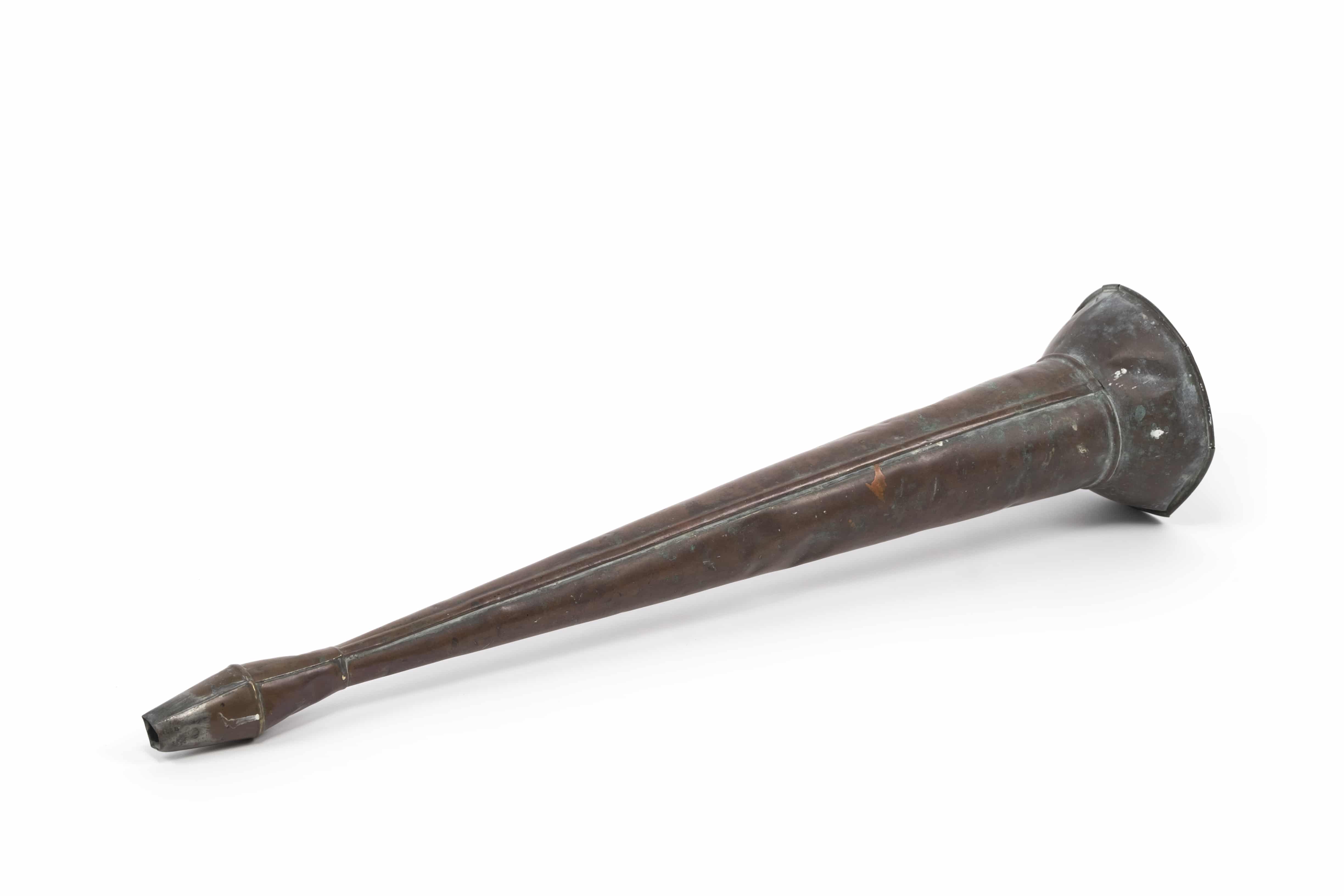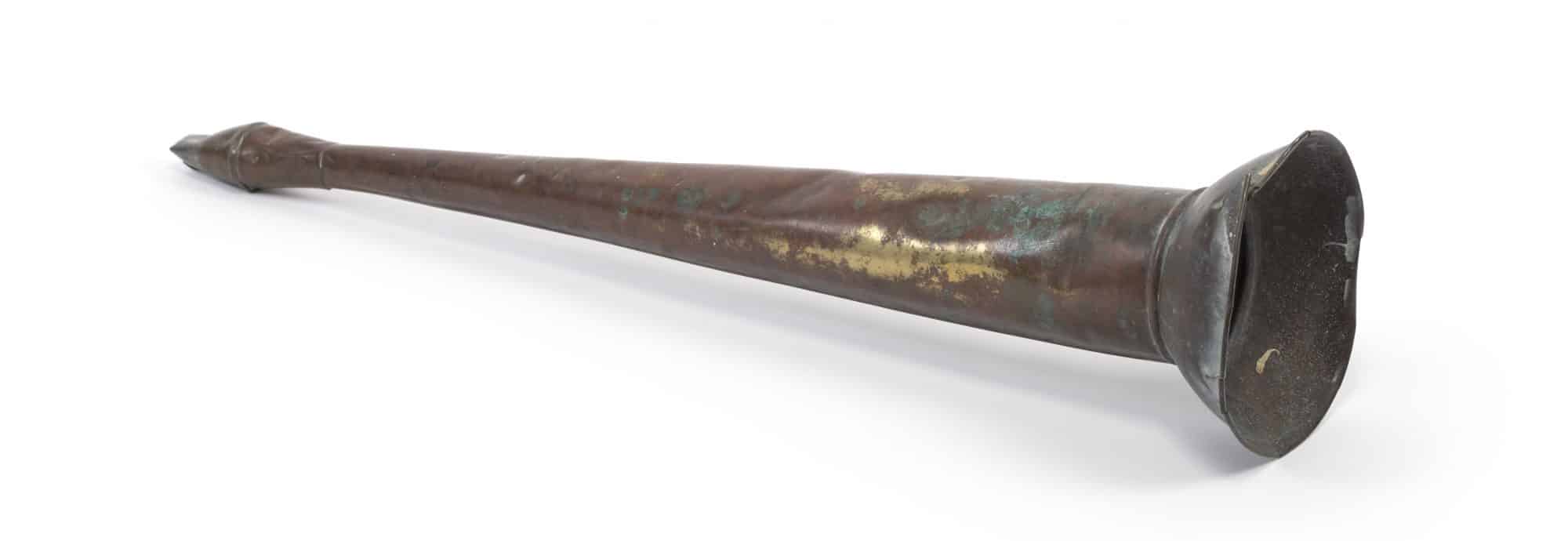Hevva! Hevva!
This horn looks quite ordinary, but it played an incredibly special role in Cornish history. It belongs to a period where the pilchard industry was one of the keystones of the Cornish economy. The seasonal pilchard fishery supported communities across the county and provided a key export of fish to Mediterranean countries, as well as food and (what was known as ‘train’) oil for the home market.
The huers were the men who stood on the cliffs scanning the sea for the shoals of pilchards. They sheltered in their huts (one of the few remaining can be seen in Newquay), and when a shoal was sighted they shouted ‘Hevva! Hevva!’ (Here they are!) through their horns to signal to those below to organise the boats and nets ready to catch the pilchards. The pilchard fishery was an entire community endeavour involving men and boys catching the fish and women and girls processing the catch. The horn is an iconic reminder of the importance of this particular fishery to the Cornish people and is a rare survivor; in fact it is believed that this is one of only two horns still in existence.
Our Cornish Quayside gallery brings to life the story of fishing around Cornwall and is a permanent exhibition on the ground floor of the museum.




